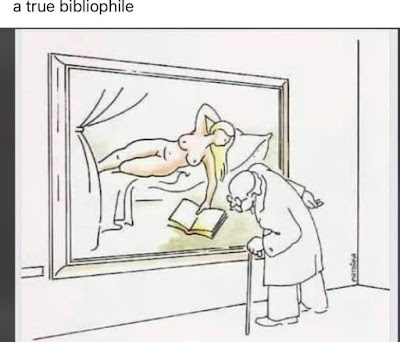Never have I worked harder to keep myself informed as to what is happening in this country and around the world. And never in my adult life have I been so misinformed about what is happening in this country and the rest of the world. I know whose fault that is - and it is not mine.
Sharyl Attkisson’s Slanted: How the News Media Taught Us to Love Censorship and Hate Journalism does an admirable job of explaining the problem. What she has to say in Slanted will horrify any reader who is concerned about the future of this country, but the scariest thing about the current state of journalism in this country and the rest of the world is that it has been so bad for so long that a whole generation of young adults now considers it all to be normal. But, of course, the first thing that readers need to know about the book is exactly who its author is. Is Sharyl Attkisson an honest broker of the book’s message or does she have an axe of her own to grind?
So, let’s begin with Attkisson’s background. She is a veteran news reporter who has won five Emmy Awards and an Edward R. Murrow Award for her investigative reporting at networks like CNN, CBS, and PBS. She is an old-school journalist who believes in following the truth no matter where it leads her or whom it embarrasses. She most definitely does not believe, and never has, in mixing her personal opinions into the news she reports. And that’s why she walked away from a successful career at CBS News when she discovered that her producers were more interested in pushing an approved “narrative” than they were in telling the truth. Gradually, over a number of months, she came to the realization that her stories were being censored out of existence because of pressure from politicians and corporate sponsors. She had the courage - and the support of her family - to walk away from a job she found as humiliating as it was frustrating. Now, she has a nonpartisan Sunday-morning news show on the Sinclair network called Full Measure with Sharyl Attikisson and produces some of the most informative podcasts anywhere. In other words, her bonafides are the real deal.
As Attkisson sees it, journalists “have blended opinion and reporting. We’ve self-censored people and topics. We’ve stepped in to try to shape public opinion rather than report the facts. It is only with this recognition of the fact that we have a problem that well-intended, serious journalists can begin to solve it.” The problem is that the vast majority of the news media have an agreed upon narrative to sell to the public and they get away with lying or distorting the truth all too easily. So why should they reform themselves when their propaganda is so successful? And they have been so successful that Attkisson says, “The information landscape becomes ever narrower, squashing diversity of thought and facts. Pretty soon, we won’t know what we don’t know. And that will be that.”
And it gets worse because pollsters have now transformed a once-enlightening tool into just another propaganda technique to sell the “The Narrative.” According to the author, “Just as The Narrative calls upon the news to codify certain story lines, political polls are now widely used for the same purpose. Polls have morphed from providing a snapshot of pubic opinion at a moment in time into being an indispensable tool used to shape voter opinion.” They simply cannot, and should not be trusted, any longer.
I’m going to end this with a long quote from Chapter 10 of Slanted because I believe that it perfectly captures the dangerous world we are living in today, a world in which we can no longer trust the news that we hear all day long, every day of the year - those same two or three stories that are pushed at us over and over again so steadily that we cannot avoid them even if we want to. Even if they are largely little more than outright lies, distortions, and omissions:
“The trend of mainstream media outlets actings as police and enforcers over other media is a shocking change in our news landscape. Reporters are now less concerned with facts and more with demanding adherence to The Narrative. They determine the position that is to be taken on issues or the facts that can be written about. They use their platform to insist that theirs is the only right and correct view. They convince their colleagues that the job of a reporter is not to be neutral or fair but to take the ‘correct’ position. They define the parameters of the language deemed acceptable or unacceptable for the media to use when covering an issue. They punish, cajole, and threaten those who do not comply. In other words, instead of covering the news, they attack those who are off narrative and cover that as if it is big news. Their goal is to stop the freethinking, independent interlopers. To make it where nobody dares to go off script or disclose the facts or ask questions that the media bullies want to keep hidden.”
Thank God, they could not “stop” Sheryl Attkisson.
On a more hopeful note, Attkisson closes Slanted with a list of reporters and organizations that also refuse to be stopped. The list includes reporters from NBC, CBS, ABC, the Wall Street Journal, Fox News, Sinclair, and ESPN. Among them are people like Howie Kurtz, James Rosen, Pete Williams, David Martin, Peter Schweizer, Lara Logan, Greg Jarrett, and John Solomon. Listed organizations include: The Epoch Times, RealClearPolitics, Just the News, The Hill, Wikileaks, the Wall Street Journal, and business news channels like CNBC, Fox Business, and Bloomberg. Conspicuous by their absence are the New York Times, CNN, PBS, and the Washington Post.
If you’ve had the patience to read to this point, this book is for you. You are someone willing to make the required commitment to thinking for yourself. You are not one of the millions who have simply tuned out because the static is just too much to deal with. Sharyl Attkisson is a name you need to remember, a journalist who will help you find the truth. You need to read this book.
 |
| Sharyl Attkisson |





































